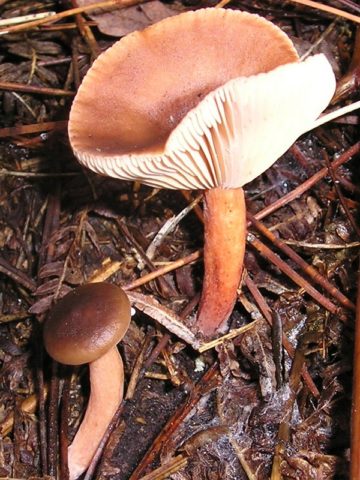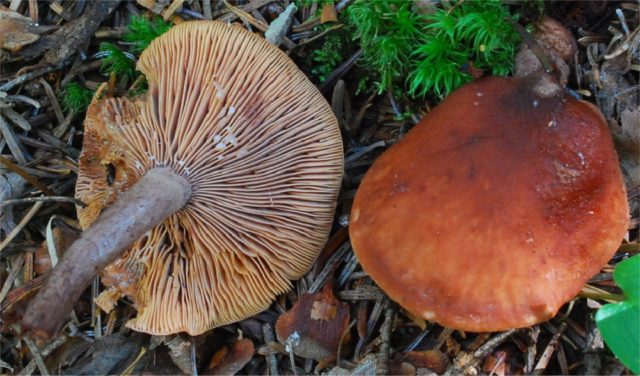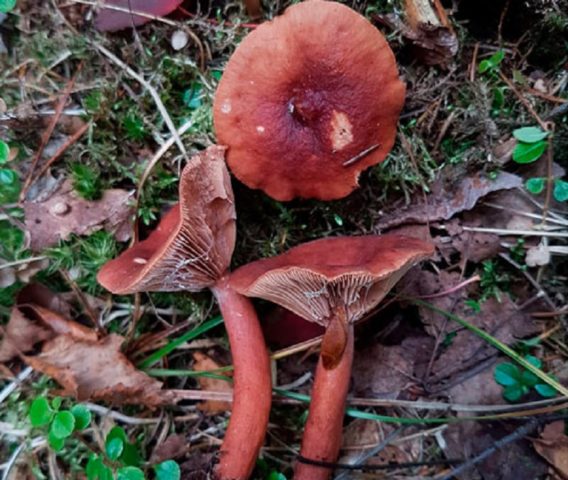Content
Watery milkweed, also called silky milkweed, is a member of the Russulaceae family, genus Lactarius. In Latin, this mushroom is also called Lactifluus serifluus, Agaricus serifluus, Galorrheus serifluus.

A distinctive feature of the watery milky milkweed is the perfectly flat and smooth surface of its cap.
Where does the watery milky milkweed grow?
The watery-milky plant grows in broad-leaved and mixed forests located in the temperate climatic zone. Mycorrhiza forms with oak and spruce.
Fruiting bodies grow singly or in small groups. Productivity is low and depends entirely on weather conditions.The fruiting period is from August to September.
What does silky milkweed look like?
The young specimen has a small, flat cap with a small papillary tubercle in the center, which changes significantly as it grows, acquiring a goblet shape. In adulthood, it reaches up to 7 cm in diameter, wavy at the edges and with a rather wide funnel in the center. The surface is dry, smooth, brown with a red tint. The edges have a less saturated color.
Plastic layer of ocher-yellow color. The plates themselves are very thin, of moderate frequency, adherent or slightly descending along the stem. Spore powder is yellow in color.
The leg is tall, reaching up to 7 cm in height and approximately 1 cm in girth, and is hollow inside. In a young specimen it has a light brown color, and as it grows it darkens, becoming brownish-red. The surface is matte, smooth, dry.
The pulp is fragile, red-brown when cracked, with oozing watery-white juice that does not change color in air. The smell is faintly fruity, the taste is practically absent.

This is a rather fragile mushroom that has virtually no nutritional value due to the lack of taste.
Is it possible to eat watery milky milkweed?
The silky milkweed belongs to a number of conditionally edible mushrooms, but it does not have any particular culinary value. The fruiting bodies can only be consumed in salted form; fresh specimens are not suitable for food.
Due to its low prevalence and almost complete lack of taste, many mushroom pickers ignore this species, preferring higher quality representatives of the mushroom kingdom.
False doubles
Various types of mushrooms are similar to the watery-milky plant. The most common and similar are the following:
- bitter – is a conditionally edible mushroom, characterized by the presence of a bitter taste and a slightly drooping cap;
- hepatic milkweed – inedible species, distinguished by milky juice that turns yellow in the air;
- camphor mushroom – a conditionally edible mushroom with a distinctive, pronounced odor;
- milky chestnut-bloody – conditionally edible, the color of the cap is more reddish.
Rules for collection and use
The milkweeds are collected during the period of their active fruiting in places remote from highways and large enterprises. After picking, the mushrooms must be soaked in cool salted water for at least 2 hours, after which they are boiled and salted. It is not eaten raw.
Conclusion
The watery milky mushroom is an unremarkable mushroom without much flavor, but with a pleasant, faintly fruity aroma. Mushroom pickers collect this species very rarely due to its low gastronomic qualities.












